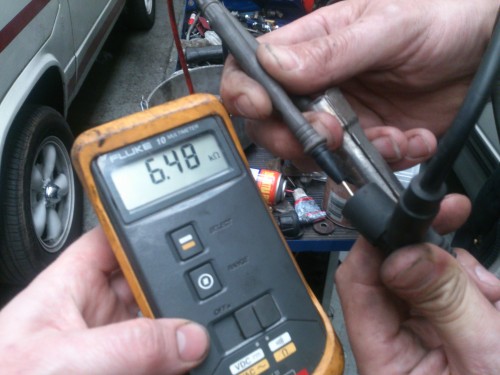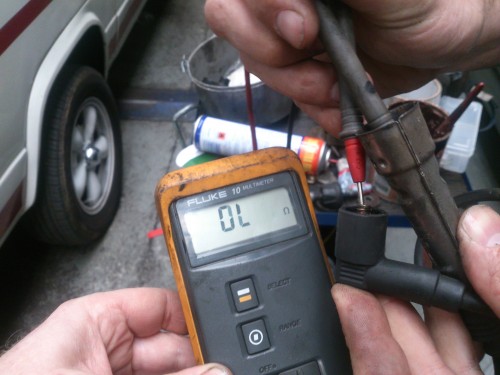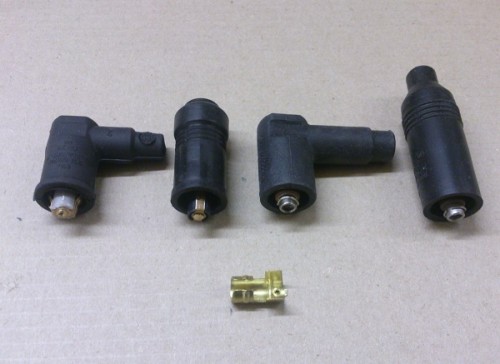HT leads, simple concept, it’s a wire that carries the high voltage produced by the ignition coil and sends it to the distributor cap and then on to the spark plugs.
Whenever we get a T3 with a petrol engine in for rough running this is one of the first tests we do, check the resistance of the HT leads.
The T3 HT leads are made up from a few components, the connection to the distributor cap, the connection to the ignition coil, the spark plug connector and the cable itself.
Each connector has some built in resistance to help with radio interference, generally the ignition coil and the distributor cap connectors generally have a 1KΩ [one thousand ohms] and spark plug connectors have 5KΩ [five thousand ohms]
The cable itself has a copper core and should have no resistance.
This means a king lead [lead from coil to cap] should have a total resistance of 2KΩ [1KΩ + 1KΩ + 0Ω=2KΩ]
Easy.
Then, each HT lead [Cap to spark plug] should have a resistance of 6KΩ [1KΩ for the cap connector, 0Ω in the cable and 5KΩ in the spark plug connector]
Checking is simple with your multimeter, select the correct scale for measuring 6KΩ and test each lead individually. You are not looking for exactly 2KΩ for the king lead, but somewhere very close, ditto for the HT leads, you probably won’t achieve 6KΩ exactly but they should generally all be even and around that figure.
VW made the leads in the manner so that each spark plug receives an even voltage, if one lead has a higher electrical resistance then the it’s associated spark plug will receive a lower voltage and result in rough running.
We often find vans here with “Silicone” leads and simple crimped brass connectors, Silicone HT lead is usually resisted along it’s length meaning that the longer the cable the greater the resistance and as you know with a T3 engine you have 2 short leads and 2 long leads, which if you absorbed what was said above will result in uneven voltages at the spark plug! We do not advise people use silicone leads on T3 models.


It is also worth visually checking the leads to make sure the electrical connectors are in good condition as sometime the saw tooth ratchet mechanism for the later pin type connectors fail and cause loose connections.

You can find HT leads here for..
Aircooled 2.0l CU vans here.
Early T3 1.9l with DIN type connections here.
Late T3 1.9l and 2.1l with saw tooth connections here.
Even Oettinger WBX6 here.
You will also find a range of HT lead components for making your own here
